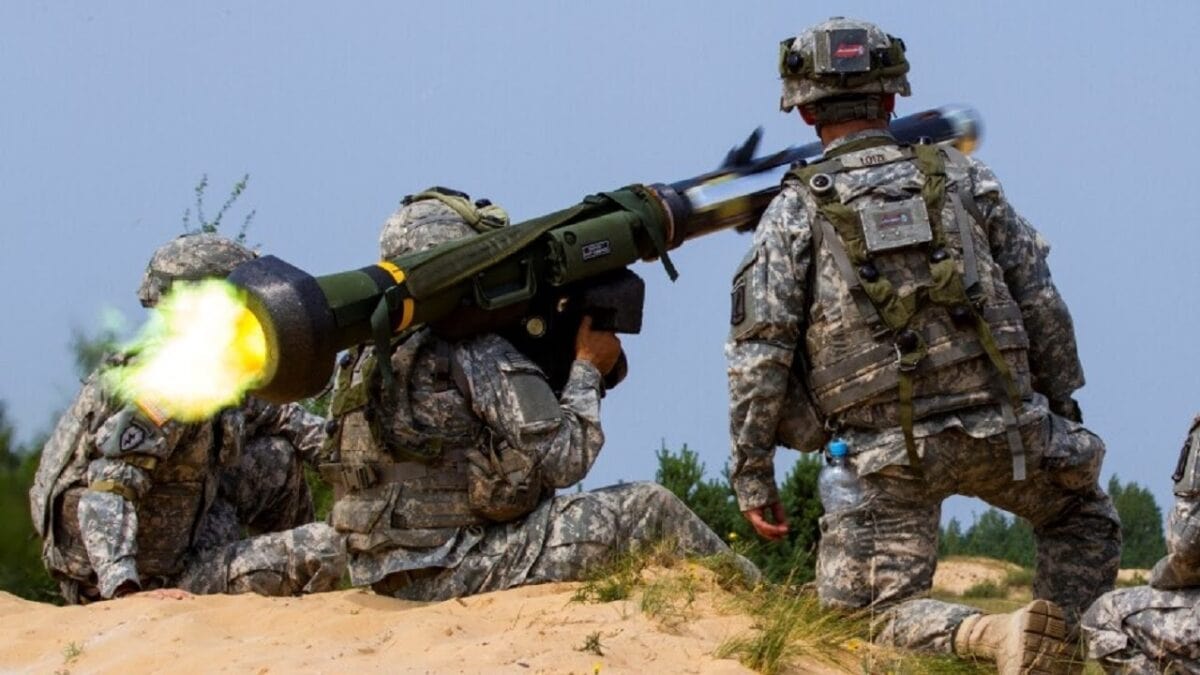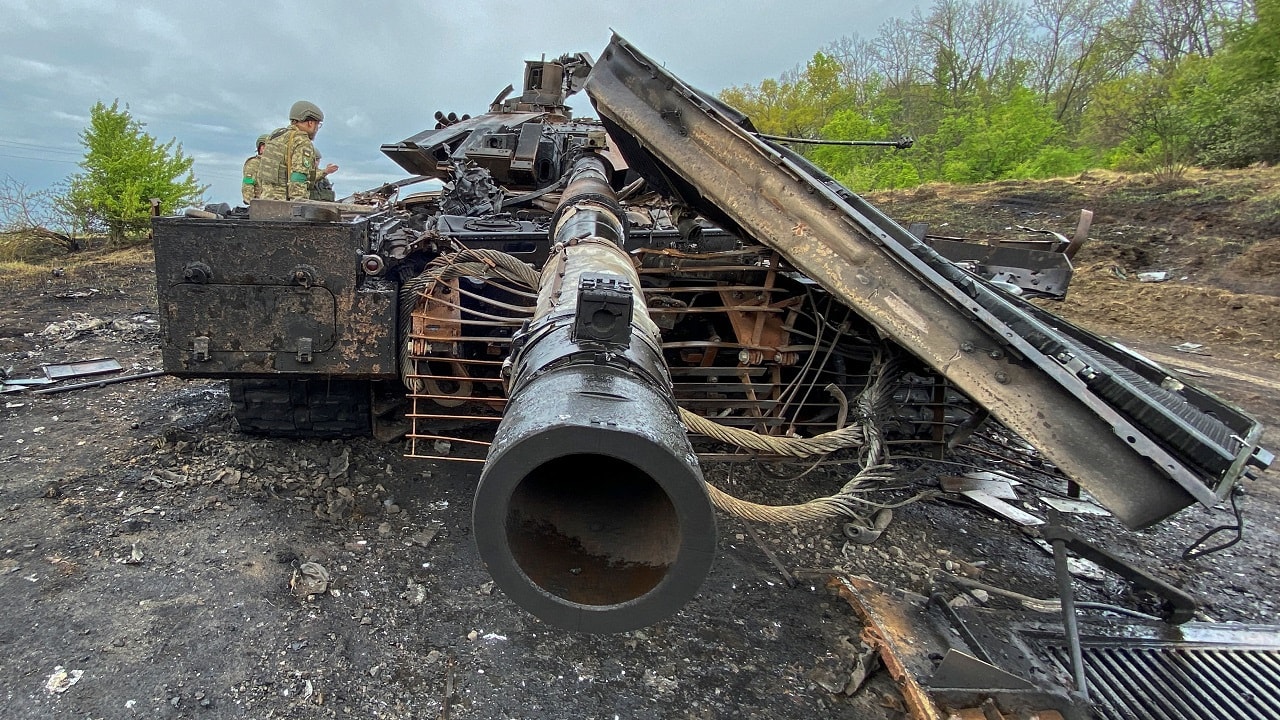In the past week, there have been many reports out of Kyiv highlighting critical actions in the Kharkiv front in which Ukraine’s troops have expelled Russian troops from several villages and towns. While every Ukrainian success should be celebrated, it is essential to determine whether these combat actions represent a turning of the tide or an inconclusive part of the routine ebb and flow of modern combat.
My bottom-line-up-front assessment: the battle in the Kharkiv-Donbas area remains a dynamic situation in which many outcomes are possible – but current trends and conditions still favor the Russians in the northern battlefront. Here’s why:
In the past several days, Ukrainian troops have conducted successful tactical counterattacks and retaken four settlements outside of Kharkiv, most recently the towns of Ternova and Pytomnyk. The UK Defense Ministry reported in an unclassified intelligence assessment it tweeted on Thursday, that the withdrawal of Russian forces from the Kharkiv area “is a tacit recognition of Russia’s inability to capture key Ukrainian cities.” If Russia had been trying to capture Kharkiv, then that would be a valid assessment. There is compelling evidence, however, to suggest that Russia has had different intentions, and despite the loss of these towns, may be accomplishing its intended purpose near Kharkiv.
After Russia’s disastrous opening phase of its invasion in which it suffered egregious losses north of Kyiv – failing to make even moderate progress in capturing the city – has reoriented its operations to center on the destruction of the approximate 40,000 Ukrainian Armed Forces (UAF) defending in the Donbas front.
To accomplish that task, Russian forces have chosen to attack the Donbas in three main directions: a northern shoulder, the center, and a southern shoulder. Their intent is to saturate key parts of the 300-mile frontline with heavy artillery, rocket, and aerial attacks, then probe the Ukrainian lines to find weak spots to penetrate the UAF lines, isolate pockets of defenders, and methodically destroy them piece by piece. For this strategy to work, however, Russia has to make sure that UAF formations do not attack Russian flanks on either the northern or southern shoulders.
Moscow appears to have chosen to simultaneously conduct what’s called economy-of-force missions near Kharkiv in the north and in the Kherson region in the south. The idea behind an economy-of-force mission is that an army will use as few troops as possible to accomplish a supporting task so that it may apply the majority of its combat power to achieve the main objective.
In this case, that means having enough Russian troops in the Kharkiv and Kherson areas to hold the Ukrainian troops defending the respective regions in place so they are unable to either attack Russian flanks on the Donbas’ northern or southern shoulders or to reinforce the Ukrainian lines on its side of the Donbas. Either outcome would put Russia’s battle plan at risk.
Russian efforts in Kharkiv and Kherson have thus far served their purposes, as the Ukrainian forces continue to be decisively engaged and have not been able to affect the Russians engaged in the Donbas fight, nor have they been able to redeploy to help the UAF troops on their side of the line. According to reports, Russia has only three weakened battalion tactical groups (BTG) engaging Kharkiv, and to prevent being overrun, have blown bridges between them and the Ukrainian counterattacks.
Kyiv appears to be pursuing a strategy in the Kharkiv/Donbas fight that has the potential to either upend the Russian plan – or play right into it. If Ukraine troops are able to continue the counterattack and destroy the three Russian BTGs, it is possible they could then pivot south towards the Russian attack on the northern shoulder of the Donbas, forcing the Kremlin to either pull forces from elsewhere to stop the UAF drive, or the Ukrainians could send that combat power to aid its troops on their side of the fight to make Russia’s battle much more difficult. There is a risk with that course of action, however.
If the UAF drive north of Kharkiv proves unable to overcome the three Russian BTGs, the UAF will effectively validate Moscow’s plans by remaining engaged with the Russian BTGs, not attacking the Russian flank in the northern Donbas, nor reinforce the UAF lines. Though weakened, the Russians have yet to be overrun by the Ukrainian troops, and on Friday continued launching artillery strikes, along with air strikes against targets in the Kharkiv region. Meanwhile, Russian forces kept up their heavy attacks on the northern shoulder of the Donbas, slowly but methodically pushing the UAF defenders backward.
War is a very dynamic, unpredictable affair, and what appears to be momentum by one side can often be reversed a short time later by the opponent. Up to this point, the strategy the Russians appear to be using in their attempt to capture the Donbas and destroy the UAF defenders there is making progress. However, it remains possible that the Ukrainian counterattacks in the Kharkiv region could derail the Russian plans. Yet for the following practical and fundamental reasons, the most likely outcome of this fight is that Russia will prevail in the Donbas.
In the modern era of warfare, there are a few key factors that almost always result in victory for the side that best employs them. In this war, Russia has advantages over the Ukraine armed in important categories that will be hard for the UAF to overcome. First is a clear Russian command of the skies. Yes, as many have pointed out, Russia was unable to completely knock out the Ukrainian air defenses, but they have badly degraded them such that Russia is routinely able to fly between 200 to 300 sorties per day.
About a month ago, there was much notoriety that Ukraine had gained the use of 20 fighter jets owing to supply parts provided by the West. Yet there has been no apparent increase in the number of Ukrainian jets attacking Russian positions beyond the five to 10 per day reported earlier in the war. The reason is clear: Russian air defense capabilities remain fully in tact and employ modern S-400 systems that makes any attempt to fly by Ukrainian pilots a likely death sentence. Ukrainian air defenses still exist, but were badly degraded at the start of the war, and continue to be knocked out by Russian attacks. These realities underscore how hard it would be for Ukraine to reverse the momentum in the Donbas.
If the UAF troops attempted to maneuver the more than 100km from the Kharkiv region to attack Russian troops investing the northern shoulder of the Donbas, they would have to travel considerable distance on open roads – making themselves as vulnerable to Russian artillery attacks, rocket fire, and air strikes as the Russian armor was to Ukrainian attacks north of Kyiv. It is unlikely a Ukrainian convoy of armored vehicles would survive in the open against Russian long-range fires.

Ukraine anti-tank weapon being fired in the field. Image Credit: Creative Commons.
If Russia continues to maintain its advantage in air power and air defense, it is unlikely Ukraine’s forces will be able to effectively attack Russian flanks, leaving Moscow’s assault on the Donbas to continue without external interference. That does not bode well for the Ukraine troops fighting for their lives in the Battle of Donbas.
Now a 1945 Contributing Editor, Daniel L. Davis is a Senior Fellow for Defense Priorities and a former Lt. Col. in the U.S. Army who deployed into combat zones four times. He is the author of “The Eleventh Hour in 2020 America.” Follow him @DanielLDavis

